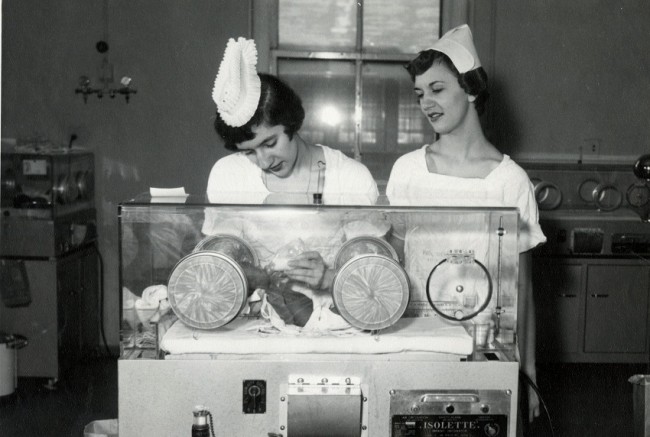As with many jobs in the medical field, the role of the neonatal nurse practitioner (NNP) is always evolving. New tools are developed and best practices are refined based on emerging research, both of which continue to empower NNPs to provide quality care for neonates. Yet, the role didn’t always look the way it does today. Here’s a glimpse into the past of NNPs and how this important medical specialty came to be.
The Early 1900s: A Need for Better Newborn Care
Nurses have played an important role in the care of newborns for well over a century, but it wasn’t until the 1920s that the first special care facilities for premature infants were developed. By the 1940s, the mortality rate for premature infants was formally recognized as a public health issue. Throughout the 1950s, the U.S. began to put efforts in place to fund and organize care for this vulnerable population. Once the incubator was developed, survival rates for preterm babies improved, and it was also around this time that financial aid became available to train physicians and nurses for the care of premature babies.
1960s: The Nurse Practitioner Movement
The 1960s was a period of tremendous change for healthcare in the U.S., as women became more involved than ever in the field and trained medical corpsmen returning from the Vietnam War began applying their skills as physician assistants. This helped to show that some types of care could be administered by non-physicians. The decade also saw the emergence of the first pediatric nurse practitioner movement (PNP) at the University of Colorado. It expanded the scope of practice for nurses in child care, and aimed to create more health care providers so quality care could be better accessed by the greater public.
Throughout the 1960s, the nursing shortage reached a critical state, and millions of dollars of funding were applied to nursing education. Student nurses were able to use assistance like grants and student loans to further their training and careers. Concurrently, the Hill-Burton Act offered federal assistance to improve hospitals in rural areas, allowing medical centers to develop better facilities for neonates.
The 1970s: The First NNPs
As NICUs started to develop across the U.S. and became staffed with nurses, the role of the NNP took on the form of primary care for neonates. While there were several titles given at first, including neonatal nurse clinician and neonatal critical care nurse practitioner, NNPs were ultimately defined as nurses with postgraduate training in neonatology who evaluated and administered care for neonates.
NNPs Then & Now: The Evolution of the Role
Through the 1970s and beyond, the role of the NNP became more clearly defined. Although it has been a hotly-debated topic, most people believe the role originated in either Arizona, Colorado or Minnesota where members were trained on both diagnostic and therapeutic procedures. Many of the earliest training programs were based in hospitals, and offered on-the-job training for neonatal nurses seeking to further their careers. Programs varied in length and scope, so the American Nurses Association (ANA) developed guidelines to ensure a unified approach for comprehensive training and education. The NNP movement was met with mixed reactions by pediatricians and healthcare leaders, but support from sources such as the American Academy of Pediatrics and unwavering dedication from NNPs allowed the profession to flourish. Formal certification for NNPs began in 1983.
Today, the job outlook for NNPs is excellent, and far outpaces that of most other jobs in the U.S. If you’re looking to explore your career opportunities, allow us to help. Contact Ensearch for a free career consultation today.

